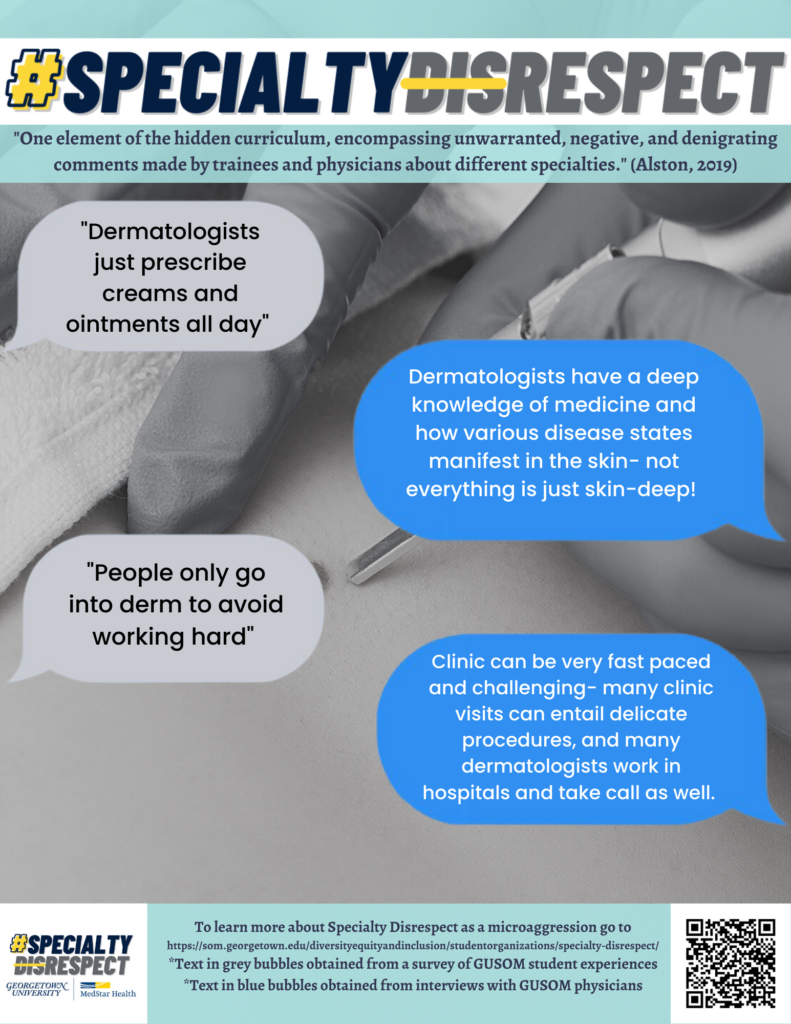Dermatology

Fiction #1: People who go into dermatology do not work hard.
FACT: Like any medical professional, becoming a dermatologist requires years of schooling. Aside from earning your bachelor’s degree, you must attend an additional four years of medical school. After passing several major exams, you then apply to a residency, which takes another four years to complete. Some people choose to focus on sub-specialties within the field, such as cosmetic or surgical dermatology, and in that case, it takes another year or two to complete a fellowship. All in all, expect a bare minimum of 12 years of schooling before becoming a certified dermatologist.1
Additionally, dermatology training includes subspecialty experience in areas such as Pediatric dermatology, phototherapy/photobiology, dermatopathology, allergic disorders and dermatological surgery.2
Fiction #2: People waste their intelligence by going into dermatology.
FACT: Dermatology is one of the most diverse specialties and dermatologists study over 3,000 different skin, hair, nail, and mucous membrane diseases and conditions in training. Dermatologists treat patients from all age groups for inflammatory, inherited, environmental, and occupational skin diseases.1 Additionally, Dermatologists are in close contact with other specialties and are frequently asked to provide consults on hospital inpatients.3
Fiction #3: People who go into Dermatology don’t help people.
FACT: Dermatologists spend a lot of time helping patients with skin cancer and malignant skin diseases. In 2016, one in four Americans were affected by a skin disease. That year, skin disease cost the US health care system $75 billion in medical, preventative, and prescription and non-prescription drug costs.4
Sources
1. What is a dermatologist? American Academy of Dermatology. https://www.aad.org/public/fad/what-is-a-derm.
2. Hoey S. So you want to be a Dermatologist. Ulster Med J. 2012;81(3):172.
3. Grimes PE. A closer look at the role of the dermatologist in championing total women’s health through the dermatology gateway. Int J Womens Dermatol. 2018;4(4):189-192. Published 2018 Nov 15. doi:10.1016/j.ijwd.2018.09.006
4. Lim HW, Collins SAB, Resneck JS, et al. The burden of skin disease in the United States. Journal of the American Academy of Dermatology. 2017;76(5). doi:10.1016/j.jaad.2016.12.043
Read the text version of this flyer
[Background in black and white is a pair of hands examining a mole on someone’s back]
[Top header in bright blue ]
“Specialty Disrespect” in bold at the top. Underneath this title reads “Specialty Disrespect (SD) is an element of the hidden curriculum, encompassing unwarranted, negative, and denigrating comments made by trainees and physicians about different specialties. SD affects all specialties, touching most medical students by graduation (Alston, 2019).”
Poster mimics an iphone messaging screen with fictional statements as receiving grey message bubbles and factual statements as sent blue message bubbles.
The fictional side reads “Dermatologists just prescribe creams and ointments all day” and the factual response reads “dermatologists have a deep knowledge of medicine and how various disease states manifest in the skin – not everything is just skin-deep!” The next fictional side reads “People only go into derm to avoid working hard.” The factual response reads “Clinic can be very fast paced and challenging- many clinic visits can entail delicate procedures, and many dermatologists work in hospitals and take call as well.”
[Bottom header in bright blue]
On the left is the dark blue Office of Diversity and Inclusion Logo. On the right is a QR code that links to this webpage (som.georgetown.edu/specialty-respect). In the middle is “To learn more about SD as a microaggression go to som.georgetown.edu/specialty-respect”
